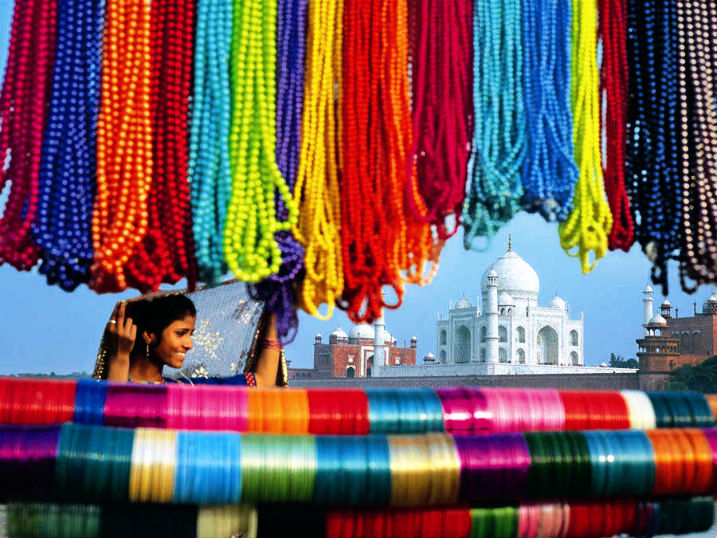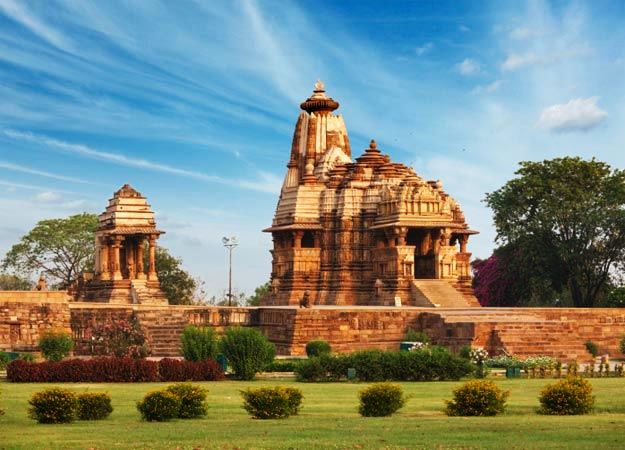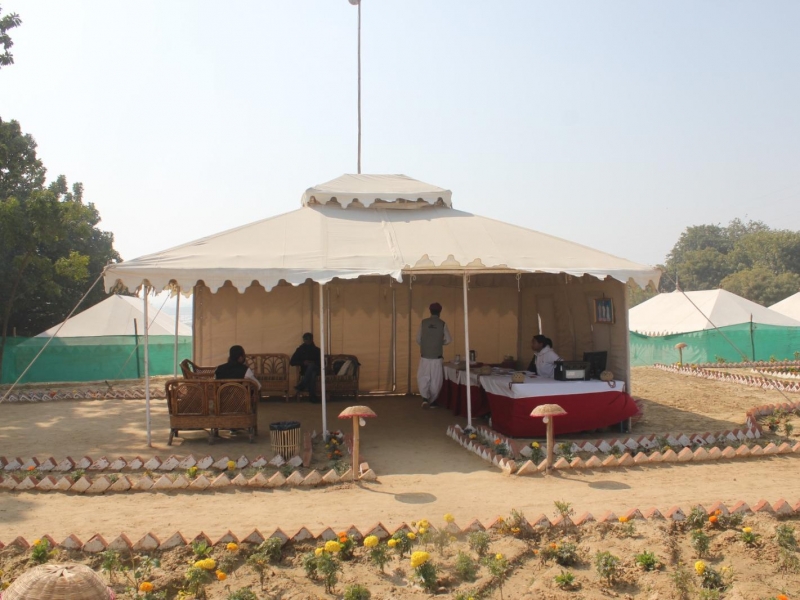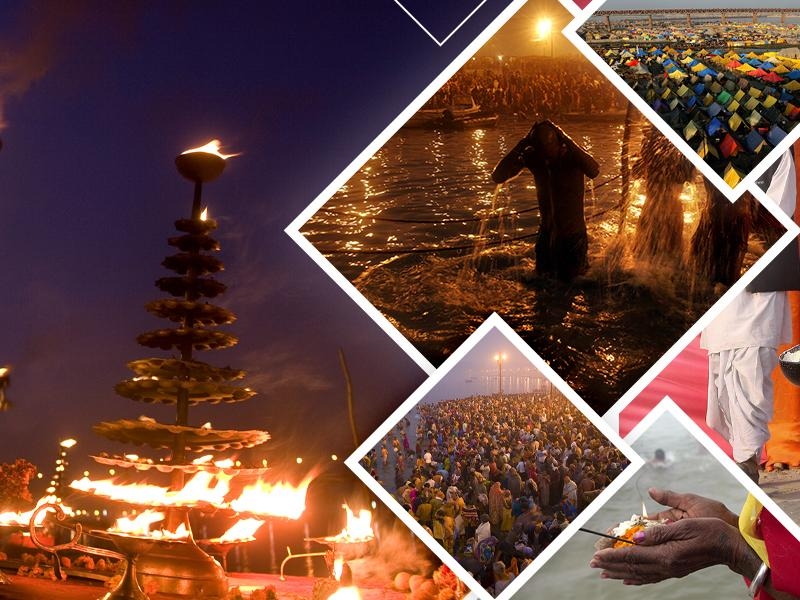
India is a land of rich culture, diversity, topography, and history, which makes it a wonderful country, wherein every state there is something worth seeing. The historical monuments and ancient architecture, all add to the beauty of the country with an abundance of history to tell. Thus with the public polls, India has decided the seven wonders of India, which everyone should explore and know about. As it is important to get acquainted with the rich heritage of India and the cultures and traditions associated with it.
The seven wonders of India, are the marvelous masterpieces of architecture, which will take you back in time and make you mesmerize the olden days. The wonders include a monolith, places of worship, even a university and a mausoleum. Let's explore and cherish the beauty of the past in today's time.
1. Taj Mahal

Taj Mahal tops the list of Seven Wonders of the World.
White marble mausoleum Taj Mahal is located in Agra, Uttar Pradesh, India, which is only 200 Km from New Delhi, the capital of India. It was built by Mughal emperor Shah Jahan in memory of his third wife, Mumtaz Mahal. The Taj Mahal is widely recognized as "the jewel of Muslim art in India and one of the universally admired masterpieces of the world's heritage". Around 20,000 people worked day and night for twenty-two years to complete construction of the Taj Mahal. The Taj Mahal was constructed using the best quality marble from Rajasthan, Tibet, Afghanistan, and China. At different times of the day, the Taj Mahal appears to be in a different color. Some believe that these changing colors depict the changing moods of a woman. It's not just a Seven Wonders of India, but it is also listed among the Seven Wonders of Medieval World and very popular among the Indian and foreign tourists.
2. Golden Temple

The most sacred place of worship for the Sikhs, located in Amritsar, Punjab.
Golden Temple, Amritsar is the most famous religious place of Sikhs, also known as Harmandir Sahib or Court of the Lord. The foundation of the Golden Temple was laid down by a Muslim saint Mian Mir. It is mostly made out of marble but it is gold plated with real gold which covers most of the outside portion. The water that surrounds the Golden Temple is known as the Amrit Saro Pool of Nectar and the water of the pool is said to have special properties. The largest langar of all Gurudwaras is organized every day at the Golden Temple where around 35,000 people a day are fed for free by temple volunteers. The Golden temple has an in-house museum that has a large collection of articles related to Sikh history.
The serenity and charm of the Golden Temple have listed it in the Seven Wonders of India, the calm and peace of mind what ones get here is nowhere. Also, the Adi Granth, the holy book of Sikhs, is installed inside the temple and also houses the Akal Takht, which is believed to be the physical attribute of God.
3. Sun Temple

This 13th century Sun Temple of Konark, Odisha is an architectural marvel as it is considered one of the grandest temples of India. Although the main structure of the temple has been collapsed around 150 years ago, yet the surviving structure represents the full glory. It is believed that the temple was built by king Narasimhadeva I of Eastern Ganga Dynasty around AD 1250. It resembles a colossal chariot, with 24 wheels, pulled by seven straining horses, and has a three-tiered pyramidal roof topped off by a fine spire. The Sun - God's chariot, also represents the seven days of the week, and the 24 hours of the day, in its concept. The temple is a brilliant chronicle in stone, with impressive sculptures and one of the Seven Wonders of India. Also, every aspect of life is represented here, and the erotic imagery depicts the sublimation of human love manifested in countless forms. Scenes from the court, civic life and war are also done with great precision and perfection.
4. Khajuraho

Khajuraho is the symbol of the rich cultural heritage of India, located in Chhatarpur district in Madhya Pradesh, Khajuraho Group of Monuments is a vast complex of Jain and Hindu Temples famous for erotic sculptures, built during the reign of Chandel Empire, between 950 and 1050 AD. The name Khajuraho is derived from the Hindi word 'khajur', which means 'date palm'. Earlier, there were about 85 Hindu temples at Khajuraho, which degenerated due to the ravages of nature. There are only about 22 Hindu temples left now. It is wrongly believed that Khajuraho temples are filled with just erotic sculptures only, whereas erotic scenes represent a relatively small part of the carvings, but sensuous eroticism prevails in all the sculptures. This spectacular artwork on the sculptures is not just renowned in India but also known in the world, making it in the list of Seven Wonders of India.
5. Nalanda University

Nalanda University is located around 100 kilometers from Patna, the capital of Bihar; Nalanda was a thriving university from 500 AD to 1300 AD until it was destroyed by foreign invaders. It had 300 lecture halls, laboratories, libraries, and an observatory. Chinese travelers recorded that, 10,000 students were taught by 200 professors in Nalanda. It was founded during Gupta age. The excavated ruins are known to extend over an area of about 150,000 square foot meters. It is believed that 90% of the remains at Nalanda University still remain unexcavated and these ruins attract tourists from around the world, which led Nalanda University to list in the Seven Wonders of India.
6. Dholavira

Dholavira, a major city of Harappan civilization can be seen and experienced as how Harappan civilization was an advanced urban civilization around 5000 years ago. Located at Khadirbet in Bhachau Taluka of Kutch District, in the state of Gujarat in western India, which has taken its name from a modern village 1 km 0.62 mi south of it. It is one of the five largest Harappan sites and most prominent archaeological sites in India belonging to the Indus Valley Civilization. It is also considered as grandest of cities of its time.
The site was occupied from c.2650 BCE, declining slowly after about 2100 BCE. It was briefly abandoned and reoccupied until c.1450 BCE. Thus historical relevance of the place attracts historians, researchers, and travellers from around the world, giving the reason that it is considered in the list of Seven Wonders of India.
7. Hampi

Hampi is a village in northern Karnataka, India. It is located within the ruins of the city of Vijayanagara, the former capital of the Vijayanagara Empire. According to the mythological epic Ramayana, Lord Rama and his brother had visited this region, while looking for Rama's wife, Sita. They visited this region to seek help from Vail and Sugriv 2 monkey brothers, who ruled the region. Due to such mythological references, this place is considered to be as the World Heritage Site, not just that it is one of the prominent Seven wonders of India. The name Hampi was derived from the word 'Pampa', which is the old name of Tungabhadra river, on whose Southern banks the city is built. The ruins and monuments are spread over an area of 26 square kilometers. The first historical record of settlement in Hampi dates back to 1 CE.
Recommended For You
-
 Best Places to Stay During Kumbh 2025: From Tents to Luxury Hotels
Best Places to Stay During Kumbh 2025: From Tents to Luxury Hotels
-
 The Ultimate Guide to Maha Kumbh Mela 2025 at Prayagraj
The Ultimate Guide to Maha Kumbh Mela 2025 at Prayagraj
-
 Understanding the Importance of the Sangam: The Confluence of Faith
Understanding the Importance of the Sangam: The Confluence of Faith
-
 The History and Mythology of Kumbh Mela: A Journey Through Time
The History and Mythology of Kumbh Mela: A Journey Through Time
-
 Best Places to Eat in Goa: Indulge in a Culinary Delight
Best Places to Eat in Goa: Indulge in a Culinary Delight
-
 The Future of Drone Tourism: How Drones are Changing the Travel Industry
The Future of Drone Tourism: How Drones are Changing the Travel Industry
























